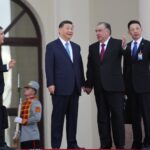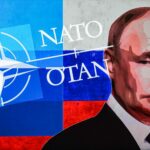Almost two years after the completion of the security axis between the United States, the United Kingdom and Australia which brought into play the Aukus alliance , the three states of the Anglosphere are proceeding in consolidating the hard core of the synergy that unites them.
The match for the development of nuclear submarines which is at the base of Aukus aims to create a supremacy in the Indo-Pacific for the countries of the pact, and to this are added other discoveries with an important geostrategic fallout: one of these concerns the development of swarms of intelligent drones guided in coordination, a disruptive technology that can open up military convergence even with actors such as Japan and Taiwan.
Another frontier is what the Aukus treaty identifies as its second pillar: the match for artificial intelligence and the most disruptive technologies. The goal, summarizes The Strategist , is “to counter China’s technological advances, by pooling resources in areas of advanced military capabilities such as artificial intelligence, quantum computing, information technology, submarine capabilities, hypersonics and anti -hypersonics, electronic warfare and information sharing”. The masthead is an offshoot of the Australian Strategy Policy Institute(Aspi) which classified twenty-three technologies as central to defining the levels of strategic-military development of the second Aukus pillar, indicating a Chinese advantage in nineteen of them.
Among these, all the technologies that have to do with submarine warfare and the automated management guided by artificial intelligence of hypersonic missiles and contrast systems of these latest generation carriers stand out. To which are also added the challenges of electronic warfare . The United States, the driving force behind the Aukus pact, is in the lead mainly on quantum computing . For this reason, ASPI invites the Aukus countries to “rapidly deepen their collaboration to guarantee the future freedom of action” of the axis between the three States, also “through access to reliable and safe critical technological supply chains”.
In this regard, at the end of May the Defense Science and Technology Laboratory of Salisbury , in the United Kingdom, organized the first active test event of dual-use artificial intelligence technologies to prepare the pact countries to converge standards, implement common talents and abilities and to coexist civil and military apparatuses functional to govern the challenges of the present and the future in the common Indo-Pacific scenario. The so-called Advanced Capabilities referred to in the Aukus treaty will have to be developed, according to the three member countries, in synergy and not at the end of the nuclear submarine guide programme.
The United Kingdom and Australia can build their geostrategic relevance in the Aukus field precisely on these fronts where it is the human factor, the technological level of the academies and the armed forces and the ability to train talents that make the difference, finding a complementary element to American supremacy on traditional military technologies. The US can fuel frontier innovation, and quantum computing proves it, the UK and Australia ensure the capabilities for such innovation to be tested and grounded in deterrence and security technologies.
From robotics for the protection of submarine infrastructures to electronic warfare, through the development of materials more resistant to ocean waters and technologies for detecting damage to military devices and predictive maintenance, the militarization of technologies now goes hand in hand with the ever-increasing complexity technology of the armed forces themselves. A lot of Aukus’ deterrent potential against the Chinese challenge will be played on this hybridization. And therefore a fundamental part of the “new Cold War” between Beijing and Washington.









